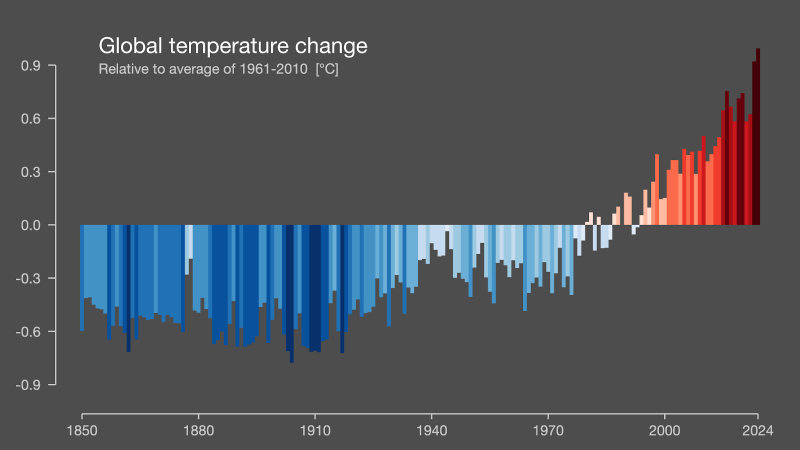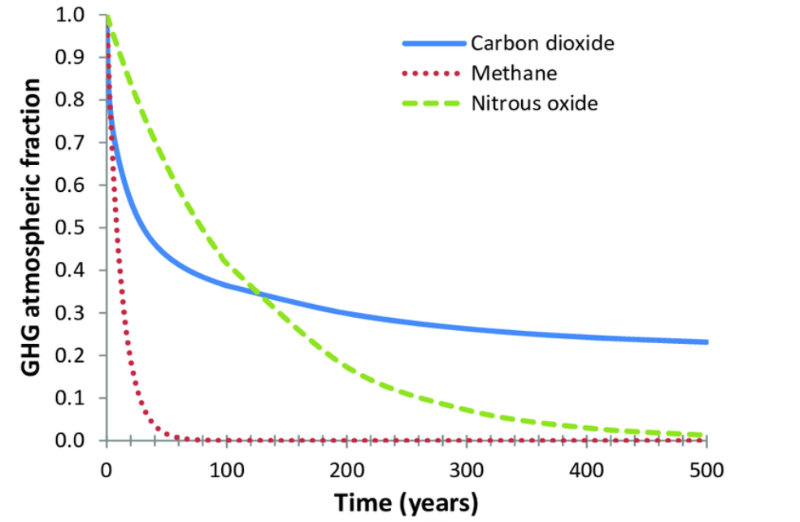With the election campaign already in full swing, what progress has Australia made towards emission reductions under Labor? Are we better informed and better prepared? David McEwen with some answers.
On an electricity grid-focused social media group, which is not generally frequented by the sort of brain-dead fossil trolls who will put a laughing emoji or inane comment on any post involving renewables or electric vehicles, I was recently accosted by a chap whose – apparently legit – profile identified him as a quality manager at an outdoor education provider.
His original post was a claim that delays in closing coal plants “do not lead to a negative climate impact.” He took objection to my assertion that winning slowly on climate is still losing, with a sarcastic sounding “ummmmm, no.” Five “m’s” – I counted.
Now, I’m right, and he (and the original poster) is flat-out wrong, but clearly, not enough people understand what should be basic physics and chemistry drummed into every high school student.
Here’s how it works.
A little goes a long way
Carbon dioxide is a trace gas in the atmosphere. About 0.04%, as Alan Jones was happy to remind us during the 2010s. Put another way, that’s 400 parts per million (ppm). If you’re thinking, like Alan, that there’s no way that a change in such a small concentration of carbon dioxide could make a difference, you might consider that it only takes about 1 milligram of arsenic per kilogram of body weight to kill someone. That’s just 1 ppm: food for thought, perhaps.
In 2024, the average was nearly 425 ppm and increasing at an accelerating rate.
When Charles Keeling first started taking measurements at Mauna Loa in Hawaii in 1958, the level was 311 ppm. Using tree-ring, ice-core and other data sources, scientists have demonstrated that the level at the start of the Industrial Revolution was about 280 ppm and had been relatively stable for the preceding several thousand years (as shown in Figure 1). This facilitated a reasonably consistent climate, allowing humans to learn agriculture and form increasingly complex societies.

Carbon Dioxide Concentration (ppm) keelingcurve.ucsd.edu (10K Years view)
That means that in the 66 years since direct observations began (a blink of an eye in the geological timescales these things normally take place over), the concentration of carbon dioxide in the atmosphere has increased by 36%.
Over the last two hundred years, it’s up by over 50%. These are incredibly fast changes in climatic terms.
Carbon dioxide is one of a number of so-called greenhouse gases (GHGs) that re-radiate heat they receive from the sun. They work sort of like a blanket on a bed, trapping heat near the surface. Without these trace gases, it’s estimated that earth’s average temperature (i.e. all parts of earth over an entire year) would be about -18oC instead of the +15oC we are used to.
What’s happened as carbon dioxide has increased? Sure enough, observed average temperatures have increased, as shown below. Relative to when global temperature observations started in the mid-1800s, temperatures in 2024 were up over 1.5oC, with most of the rise ironically happening since the Rio Earth Summit in 1992, at which plans were made to do something about climate change.

Global average temperature change since measurements began showyourstripes.info.
To clarify, there is a logarithmic effect at play here. As carbon dioxide concentration increases, each additional unit has a smaller warming effect, which is why increasing the concentration of carbon dioxide by half has only increased temperatures by 1.5 degrees.
Scientists are in no doubt that the warming is due to humanity’s emissions of extra greenhouse gases, through digging up and burning enormous quantities of so-called fossil fuels – coal, oil and gas – for our energy needs, clearing vast amounts of forest for our agricultural needs, exponentially increasing ruminant animal herds, and various chemical processes including making cement.
In the process, we’re also gravely threatening other planetary boundaries related to the preservation of the biodiverse ecosystems that underpin our economy and lives.

Source: ourworldindata.org.
Urgency required
As concentrations of carbon dioxide (and other GHGs) have increased, so have global average temperatures, unleashing a range of deleterious impacts, including more frequent and severe extreme and destructive weather events, sea level rise, and ocean acidification leading to the collapse of marine ecosystems and food supplies.
Rising sea levels due to thermal expansion and melting land ice is already unstoppable, and we have locked in multi-metre rise over the coming centuries,
threatening a billion people living and farming in low-lying coastal areas.
Mr “outdoor education quality manager” might claim that these impacts won’t be catastrophic and, indeed, there could be positive outcomes. “CO2 is plant food,” he might post, omitting that you can have too much of a good thing, as those who have over-watered a house plant might attest.
However, recent research suggests that we reached “peak carbon sequestration” by plants over a decade ago. Meanwhile, many plant species thrive in a reasonably narrow band of optimal temperature and precipitation. More temperature extremes and less consistent rainfall – increasingly see-sawing abruptly from too much to too little – are far from conducive to high yields.
New Report: coal and gas emissions “set to soar” under Safeguard Mechanism
But aren’t we expecting global human-caused emissions of carbon dioxide and other greenhouse gases like methane and nitrous oxide to peak soon and start declining? Hopefully, yes.
And given those graphs are all correlated, won’t that mean that as emissions start to reduce, then temperatures and carbon dioxide concentrations will also start to reduce? Unfortunately, in this case, correlation is not causation.
Because carbon dioxide, and almost every other greenhouse gas (except methane), are pretty stable molecules, they hang around in the atmosphere for a long time. Hundreds to many thousands of years. Because carbon dioxide is plant food and dissolves in water, about half of humanity’s excess emissions are removed from the atmosphere quite quickly.) But the other half persists for much longer, as you can see below.

Decay rates for major greenhouse gases in the atmosphere. Source: researchgate.net.
Emissions are cumulative
This means a lot of what we emitted into the atmosphere two hundred years ago is still there, still doing its warming trick, and,
a lot of the much greater annual amount we’re emitting today will still be around in another 200 years.
Back to our blanket on the bed example, it’s analogous to adding a new cover every year but not taking any away. In the 1800s, it was just a sheet added each year. Then it became a cotton throw, a woollen blanket, and now it’s a goose-down quilt. Emissions accumulate in the atmosphere.
Therefore, as emissions start to decrease, we’re still adding an extra cover to the bed each year; it’s just that they start to get thinner again. We’re still not taking any off. As such, the last ten years are simultaneously the coolest decade many adults will ever experience again and the hottest ten years on record.
If we make it to zero net emissions in a way the global climate system can respond to, rather than simply what it says on somebody’s offset spreadsheet), we can expect temperatures to stabilise at some ghastly new normal.
Even at zero net emissions, temperatures could keep rising due to arctic ice albedo, permafrost melting and releasing trapped methane. In addition, we also need to deal with a heating pulse associated with ditching our addiction to fossil fuels, given the current cooling effect benefit of some of the so-called aerosols released when we burn coal, oil and gas.
Your vote counts
The prognosis is grim, and global geopolitics are currently working against a safe future for humanity and the other species we cohabit with.
The only hope is for countries to elect governments committed to genuine, aggressive climate action.
And while Australia may seem to be an emissions minnow, we only account for about 1% of reported global emissions. In fact, our position as a major miner and exporter of both fossil fuels and metals such as iron ore, whose traditional processing produces vast amounts of emissions. According to ($) economist Adrian Blundell-Wignall,
Australia actually has influence over nearly 10% of global emissions.
Plus, we have the renewable resources (sun, wind, empty land and know-how) to significantly reduce our domestic and exported emissions while potentially growing the value of our exports, as explained in detail by economist Ross Garnaut. We just need the political focus and determination to make it happen.
Grant King and the Big Gas Con – how fossil fuel giants are cheating Australia’s emissions system
David McEwen is a Director at Adaptive Capability, providing climate risk and emissions reduction strategy, program and project management. He works with businesses, community leaders, policy makers, designers and engineers to deliver impactful change. His book, Navigating the Adaptive Economy, was released in 2016. He holds an MBA from the Australian Graduate School of Management and a certificate in Sustainability and Climate Risk from the Global Association of Risk Professionals.

